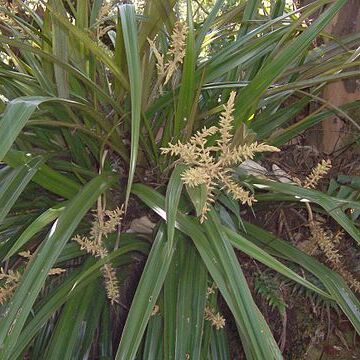Stemless or short-stemmed, dioecious herbs. Rhizome usually well-developed; roots fibrous. Leaves rosulate, 3-ranked, linear to lanceolate, forming a closed sheath at the base. Inflorescence a panicle; peduncles 3-angled. Pedicels solitary in the axils of bracts, not articulated. Perianth segments connate, 1-or 3-nerved, erect, spreading or reflexed, the outer often larger than the inner. Filaments filiform or somewhat flattened, attached to the perianth segments; anthers dorsifixed, ovoid, introrse. Ovary superior, sessile, depressed-globose to ellipsoid, 1-or 3-celled; ovules few to numerous, axile or parietal; style thick or absent. Fruit a berry; perianth persistent. Seeds ovoid or angled, glossy.

